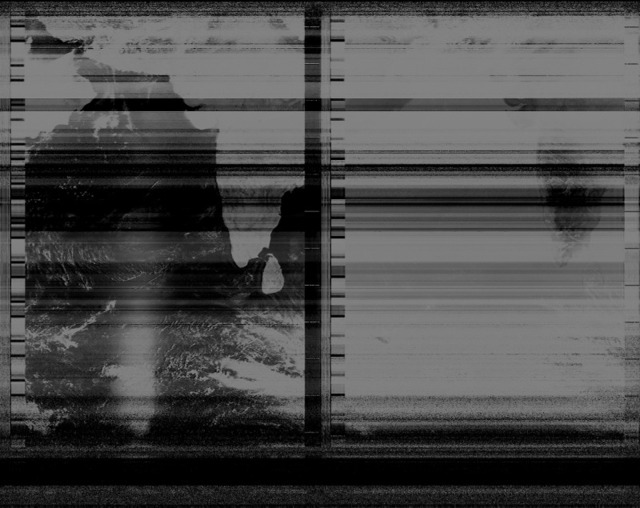Over the Arabian Sea
Published by Arun Isaac on
Tags: radio, satellite, weather, electronics, project
Perhaps, it has taken a little longer than anticipated. The quest to receive NOAA weather images over APT has spanned almost an entire year. And, like any drawn out journey, it sure did have its more than fair share of highs and lows. But, here at last, we have these spectacular images - images that rained down from the sky! It’s true that they are still imperfect, and rather noisy (a situation that I intend to fix soon). But, anyway, here they be recorded, before the miracle of the moment passes away…
This image was obtained from a particular pass of NOAA 19 over the Arabian sea on February 25, 2013. From my ground station at Coimbatore (11 N lat, 77 E long), the satellite attained a maximum elevation of around 41 degrees. The antenna used was a double cross design by Gerald Martes. The receiver used was Ganesan’s LRR200. Ganesan (KJ6LRR, and now also VU3GEK) has always been a great source of inspiration, ideas and guidance. It was he who set us up on this project, supplied us with the necessary components, and got us started. Much thanks is owed to him.
The LRR200, which is designed for reception of the 144-146 MHz VHF ham band, had to be tweaked a little bit before it could be used to listen to NOAA frequencies. Following are the list of changes. Please refer to the LRR200 schematics at Ganesan’s site for exact component nos.
- Inductor L4 in the first local oscillator tank circuit had to be tuned to 136-138 MHz.
- Capacitors C1 and C2 had to adjusted so that the preselecting filters at the front end of the receiver let in 136-138 MHz.
- Second IF filter FL1 had to be changed to CFU455B so that the IF bandwidth was wide enough to let the apt audio through.
It is still hard to believe that this image was received from a radio hurtling through the upper reaches of the atmosphere at more than 25000 kilometers per hour! But, I think I’m getting used to the feeling. My initiation into the world of satellites, and satellite communication! Whatever is to come in the future, the first moment, however small and simple, will always have its place in one’s memory.
Despite successful NOAA reception, the project still requires a lot of perfection. A new receiver extending the LRR200 design with a digitally controlled PLL synthesized first local oscillator is in the pipeline. Happily, the design is in the final stages of its development, and should soon be done. Once that is done, and there is more time to spare, hopefully, I shall move on to SDRs, HRPT, and all the digital firepower that goes with it. In any case, the future looks interesting, and I suppose that’s not at all a bad feeling to have. :-)
And, while we are still on the topic of satellites, I think I shall share some really cool stuff I came across recently. Here are the links to them:
http://www.kickstarter.com/projects/zacinaction/kicksat-your-personal-spacecraft-in-space
http://mygroundstations.com/new-sites/
Enjoy reading, and good bye! See you later!
